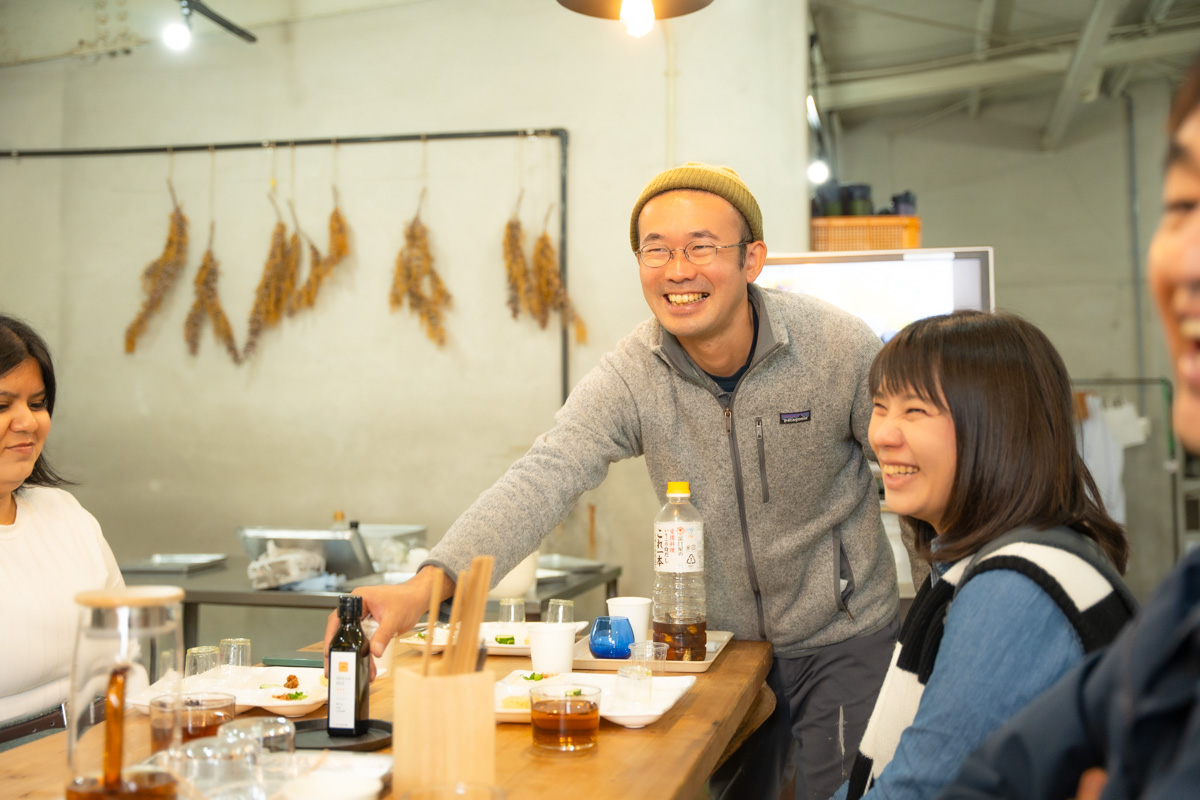
The Bonds Woven by Olives: A Life Unique to the Island, Connecting to the Future

峰尾亮平
Ryohei Mineo
Etajima [Hiroshima]
Mineo Ryohei, from Kanagawa Prefecture, represents the Setouchi Itonami-Sha LLC. Until his mid-30s, he worked as a company employee while organizing numerous music and book events mainly in Yokohama. The Great East Japan Earthquake led him to reevaluate his lifestyle, fostering a desire to work in food production. This desire prompted him to apply to the Etajima City's regional revitalization cooperation team in Hiroshima Prefecture, which he discovered by chance. In 2016, he was employed as an olive cultivation instructor and moved to Etajima City. Since then, he has been involved in olive cultivation and product processing. Currently, he also organizes tours centered around olives and engages in town development activities.
Etajima City, located about 7km south off the coast of Hiroshima City, has been working on becoming an "Olive Island" since 2011, in collaboration with local businesses and citizens. In 2016, as part of this effort, Mineo Ryohei was appointed as the "Olive Cultivation Technical Instructor" by the regional revitalization cooperation team. Even after his initial three-year term, Mineo decided to continue living in Etajima City. Now, he runs the Setouchi Itonami-Sha LLC and is actively involved in tourism tours centered around olives and town development. What does the future of the island look like through Mineo's eyes? We asked him.
The Desire to Make a Living from Food Led Me to the “Island of Olives”
“There is an olive tree about 70 years old at the island’s elementary school. It was planted by an islander who visited Shodoshima as a souvenir long ago and has grown to a height of 10 meters, bearing fruit. This signifies that the island provides a comfortable and suitable environment for olives,” says Mineo Ryohei, who moved to Etajima City in Hiroshima Prefecture in 2016 as part of the regional revitalization cooperation team. He now grows olives on six farms overlooking the Seto Inland Sea as the representative of Setouchi Itonami-Sha LLC, producing pickled olives, oil, and other processed goods. Additionally, he hosts tours that include olive harvesting and oil pressing.
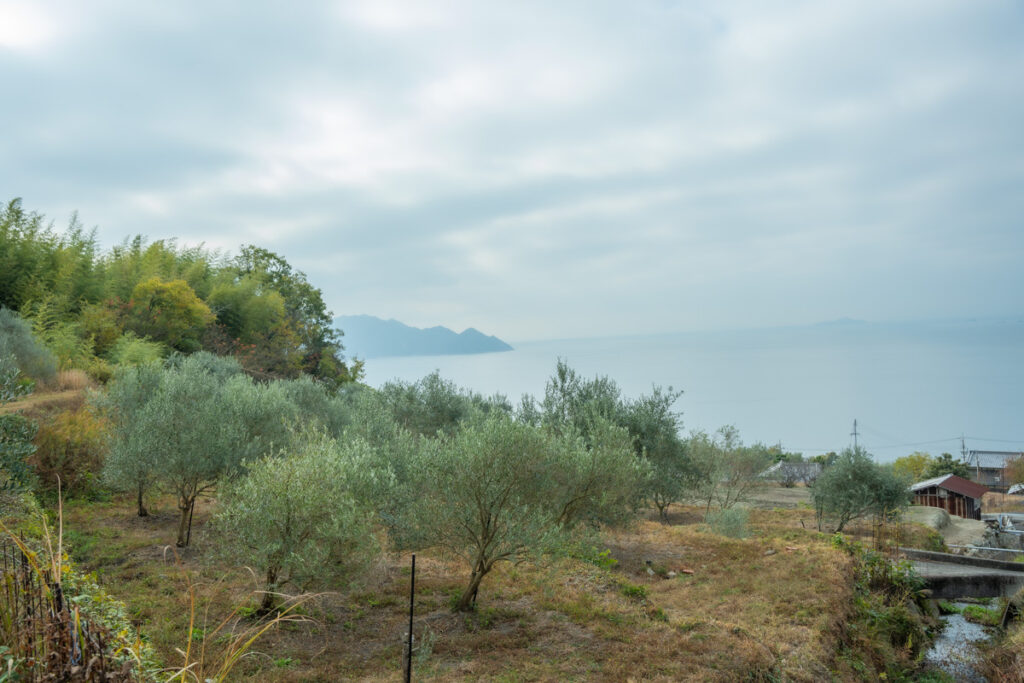
Etajima City comprises Etajima and Nomijima islands, along with surrounding islets, located about 7 km south of Hiroshima City. Known for its seafood, like oysters, small dried sardines, and citrus products, the city has been engaging in olive cultivation since 2011, together with local businesses and citizens. Taking advantage of the long sunshine hours and scarce rainfall, this major project involves growing olive saplings, harvesting, and processing the fruits. Mineo was appointed as the first member of the regional revitalization cooperation team, serving as an “Olive Cultivation Technical Instructor.”
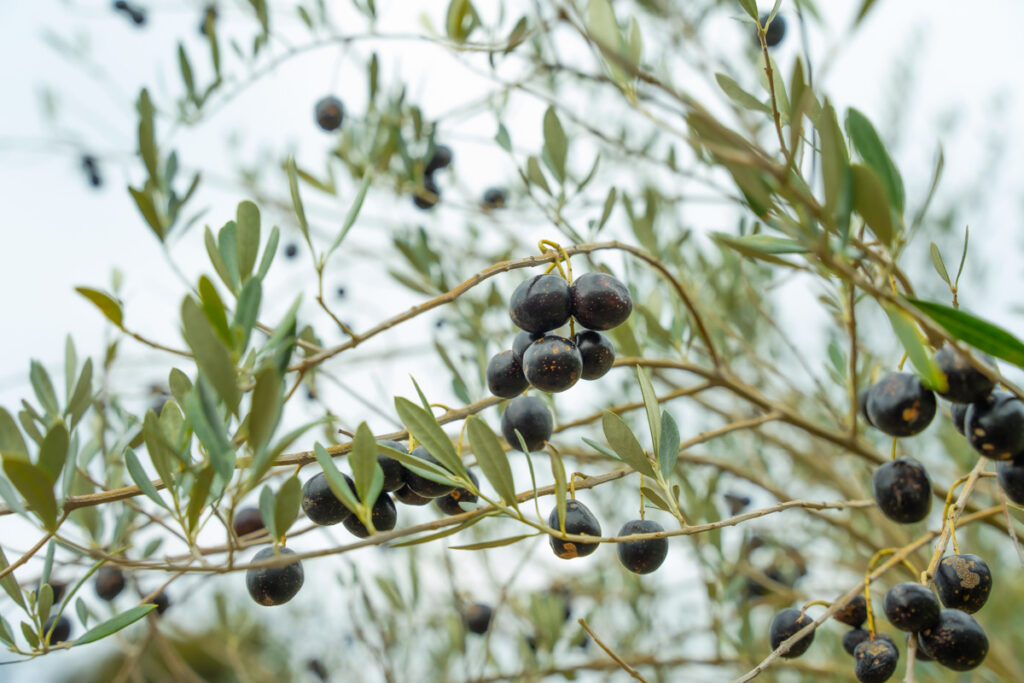
Having never visited Hiroshima before moving to the island, Mineo was born and raised in Kanagawa Prefecture and lived an urban life until his mid-30s. While working as a company employee, he regularly organized events to introduce his favorite music and books, creating numerous opportunities for people to interact.
“Living in Yokohama, with a population of 3.7 million, I organized many events but never felt a cumulative sense of achievement. There were always new faces, making it difficult to establish connections due to the large, ever-changing crowds. Plus, the places we lived, worked, and played were all different, leading to a scattered lifestyle,” Mineo reflects.
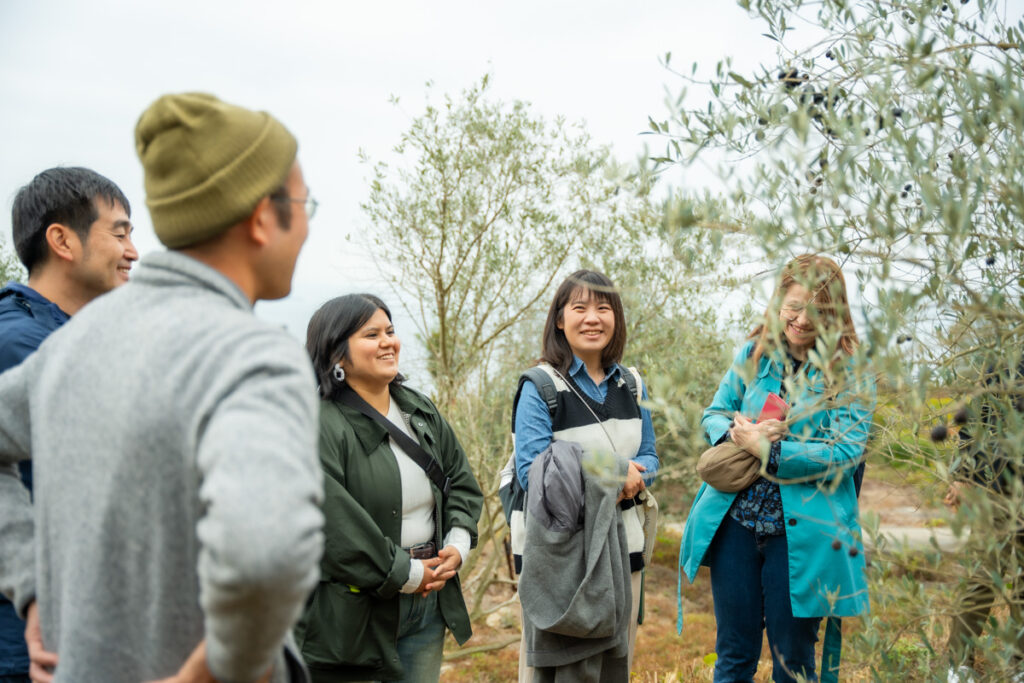
The desire for a quieter town grew stronger when the Great East Japan Earthquake struck. Facing restrictions on electricity use made Mineo critically assess his reliance on vegetables from outside the prefecture, highlighting his lifestyle’s fragility.
“I realized how dependent my life was on other regions even for essential food, which made me want to engage in food production in the future,” he says.
It was then that he found out that the city of Etajima was looking for a local development cooperative team member to help with olive cultivation.
It had been only about five years since they started growing seedlings on the island, so I thought there was still something I could do to help. The city and residents are working together to create an “olive island” over the next few decades. I felt that I wanted to be a part of that circle and work on it while feeling a sense of fulfillment.
Mineo, who intuitively felt a connection to the island, became a resident.
Adopting the Island’s Ways in Both Farming and Living
Etajima City’s project aimed at making it an “Olive Island” involves the city selling saplings to citizens who then grow them, with local businesses purchasing the harvest to produce goods, aiming for a sixth-sector industrialization. Mineo was dispatched as an olive cultivation technical instructor when the first olive trees he planted were finally bearing fruit.
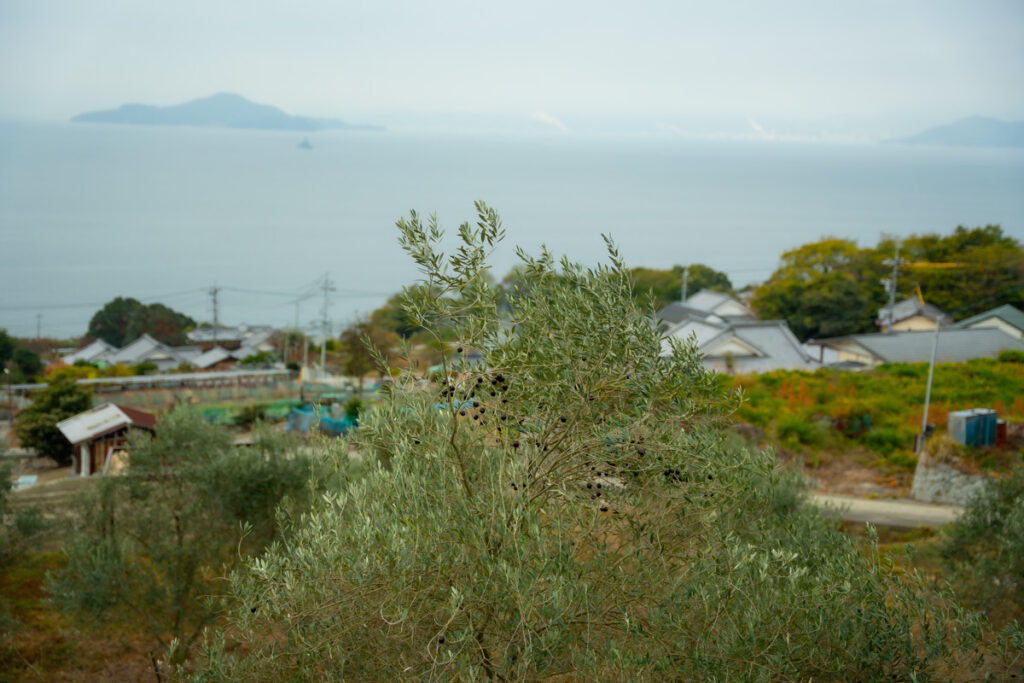
“However, I was a beginner in agriculture. I started by visiting farmers who were already growing olives to see how they were doing. Then, I frequently visited Shodoshima, an advanced area, to learn not only about cultivation but also about processing, such as how to squeeze oil.
After living on the island for six months, I was able to rent abandoned agricultural land as a farm, and a year later, I started planting olive trees,” he recalls.
Mineo, who wanted to make olive cultivation his livelihood, felt more determined to settle on the island as he began to see the fruits of his labor after his three-year term and additional years.
“I never really found it difficult. If the olives are growing well on this island, it means I’m doing something right. Coming from a non-agricultural background, I believed following the island’s ways in both farming and living was the best approach.”
As Mineo gained experience and knowledge alongside the growth of the olive trees, he gradually expanded his farms and solidified his role as a cultivation instructor. He also made efforts to close the gap between himself and the islanders, even picking up the Hiroshima dialect, which was initially unfamiliar to him. Now, he is hardly ever asked, “Where are you from?”
After completing his three-year term with the regional revitalization team, Mineo established the Setouchi Itonami-Sha LLC, handling everything from cultivation to product processing. Currently, he tends to about 350 olive trees, and the oil pressed from these olives has been highly rated in contests.
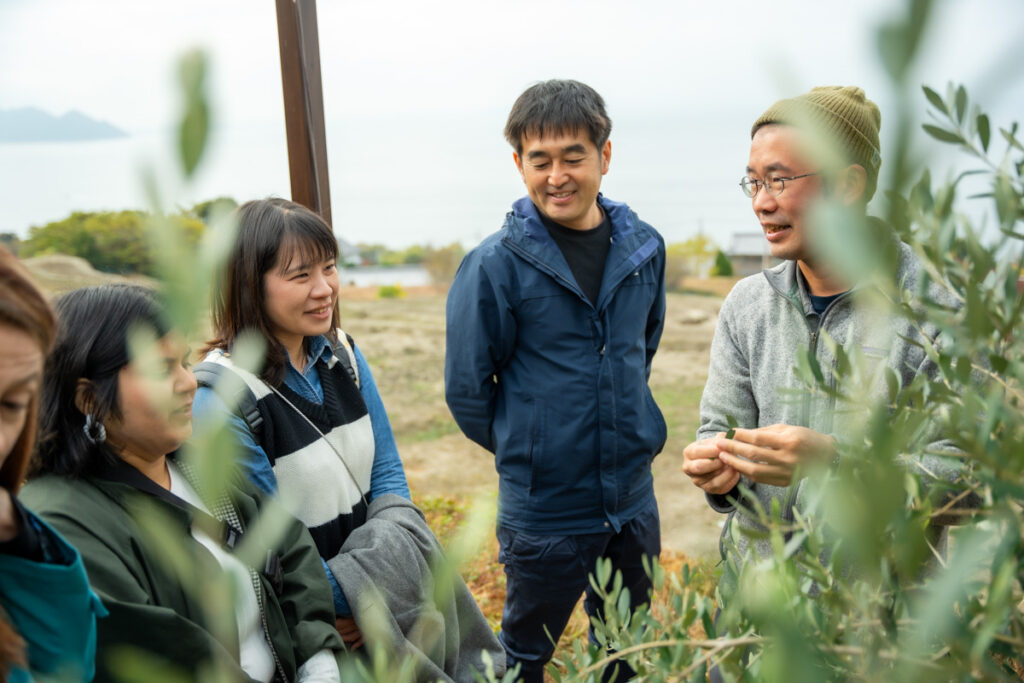
“Olives start to oxidize the moment they are harvested, so we press the oil within 24 hours of picking, including the olives brought in by locals. This ensures we deliver the freshness and quality of our product,” Mineo explains.
However, the challenge lies in making consumers understand the value of the oil, which is priced several times higher than foreign brands available in supermarkets.
“To convey its value, it’s essential for consumers to visit the island, interact with producers, and learn about olives and their culinary uses. Making the producer’s face known and sharing the story of how the product reaches the consumer is crucial for sustaining our cultivation efforts. It was at this time that a travel agency approached me about an experience tour centered on olives,” he reflects.
Weaving Bonds Between the Island and People Through Olives
The tours, which include harvesting olives, pressing oil for tasting, making spoons from olive branches, and weaving crowns from the leaves, offer a full day of olive-themed activities. Participants who visit the farm overlooking the Seto Inland Sea enjoy learning about olives and are highly satisfied with the experience of tasting the oil they pressed themselves, with Mineo acting as the guide.
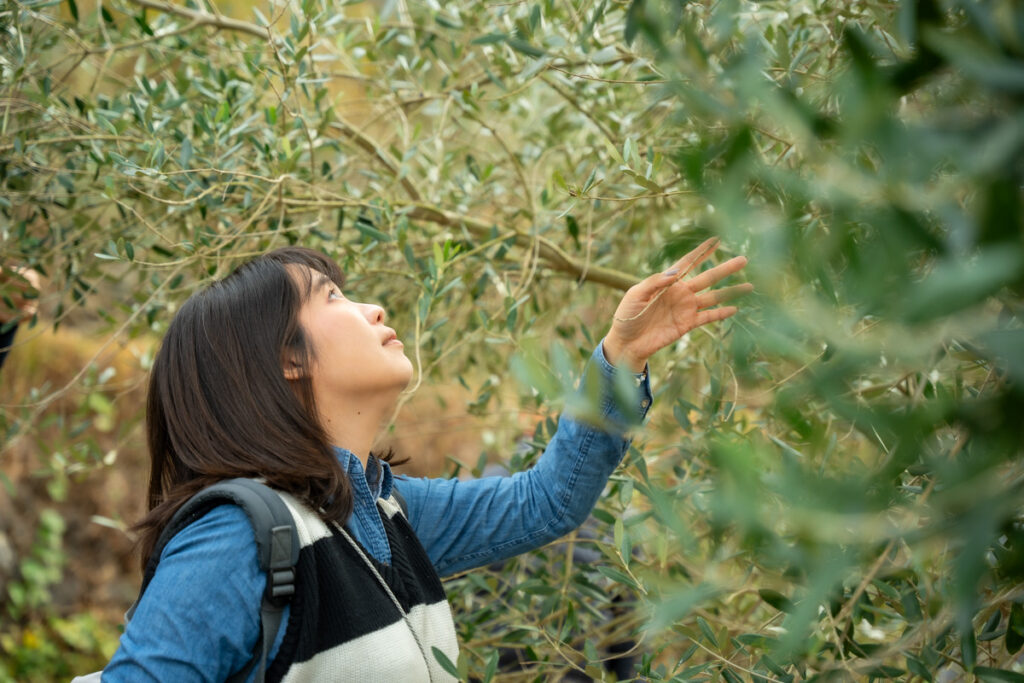
“Watching the participants, I realized what I wanted was to create fans of Etajima through olives. I wanted to weave bonds between the island and people through olives,” Mineo says.
With a population of about 20,000 and an aging rate exceeding 45%, Etajima has seen a decrease of 5,000 people since Mineo moved there seven years ago. The continuation of this trend threatens the viability of both the industry and the way of life on the island.
“That’s why I want to use tourism as a means to introduce people from outside the island to its wonders through olives, hoping it will lead to revitalization and town development, eventually increasing the population,” he expresses.
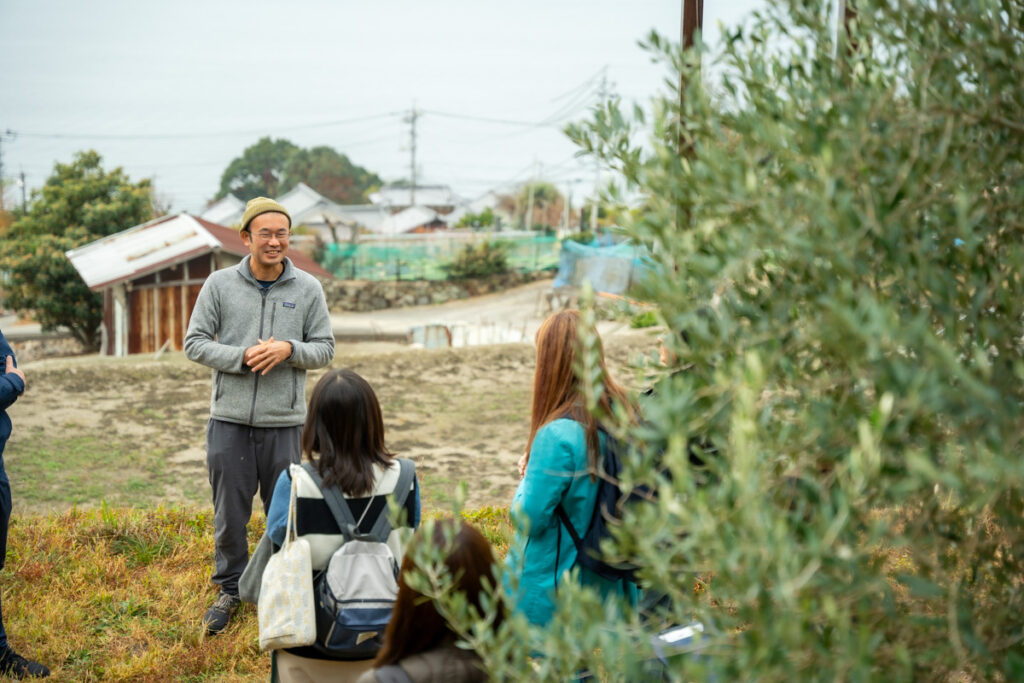
Fortunately, there is a growing number of young people in Etajima City eager to uplift the community, including those who have relocated like Mineo. These individuals are engaged in agriculture, food and beverage, and lodging, sharing a sense of belonging to the community and commitment to town development.
“It’s rare to find a region with such diverse individuals. It feels like we’re all part of ‘Etajima City Corporation,’ naturally helping each other out, especially during olive harvest season. It’s delightful to have our living, working, and recreational spaces all in the same place, something unimaginable in Yokohama,” Mineo shares.
What Do We Want to Pass on to the Future?
“I want to spark interest in the unique lifestyle and the workings of the Seto Inland Sea, using olives as the starting point.”
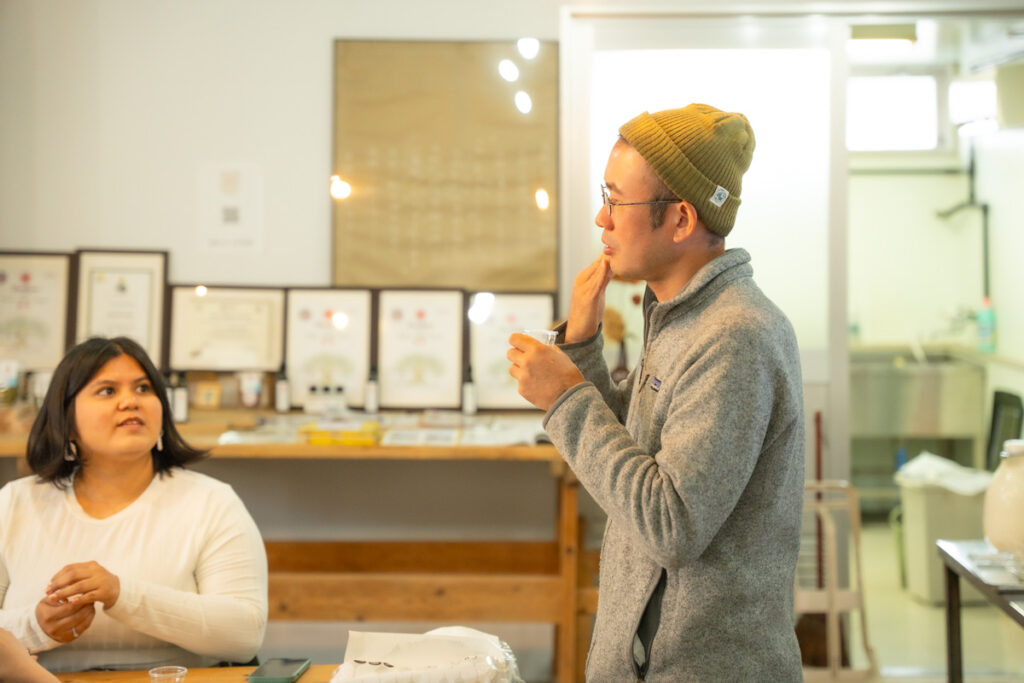
In closing, we asked Mineo what he hopes to pass on to future generations.
“There’s a way of life here on the island that can only be experienced in Etajima. It’s precious and embodies the essence of the island. If possible, I want to preserve it and pass it on to the next generation. What I can do is cultivate olives with passion, sharing their greatness and encouraging more people to take an interest in life on the island and the Seto Inland Sea. I’m sure there are many people out there, just like I was.”
